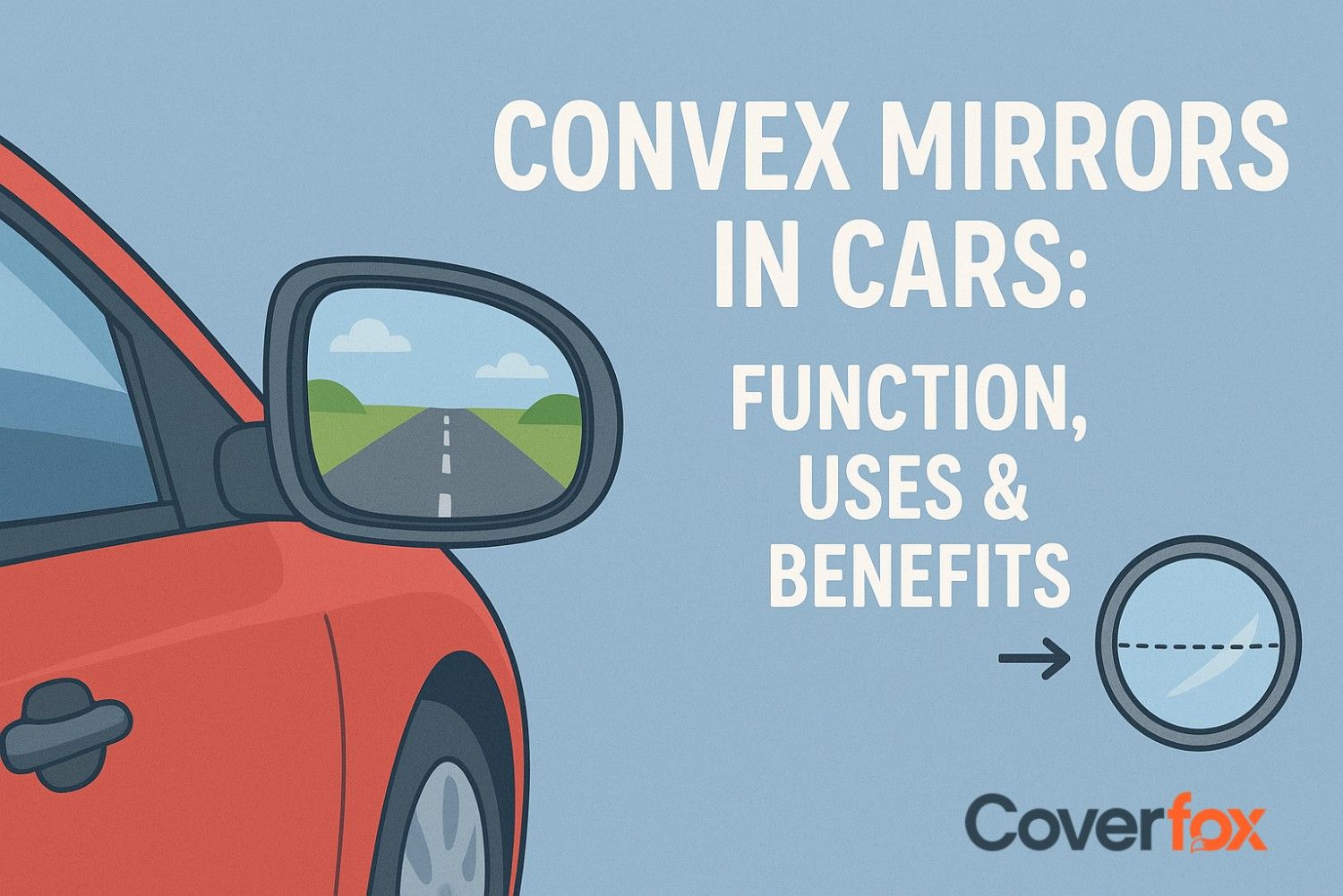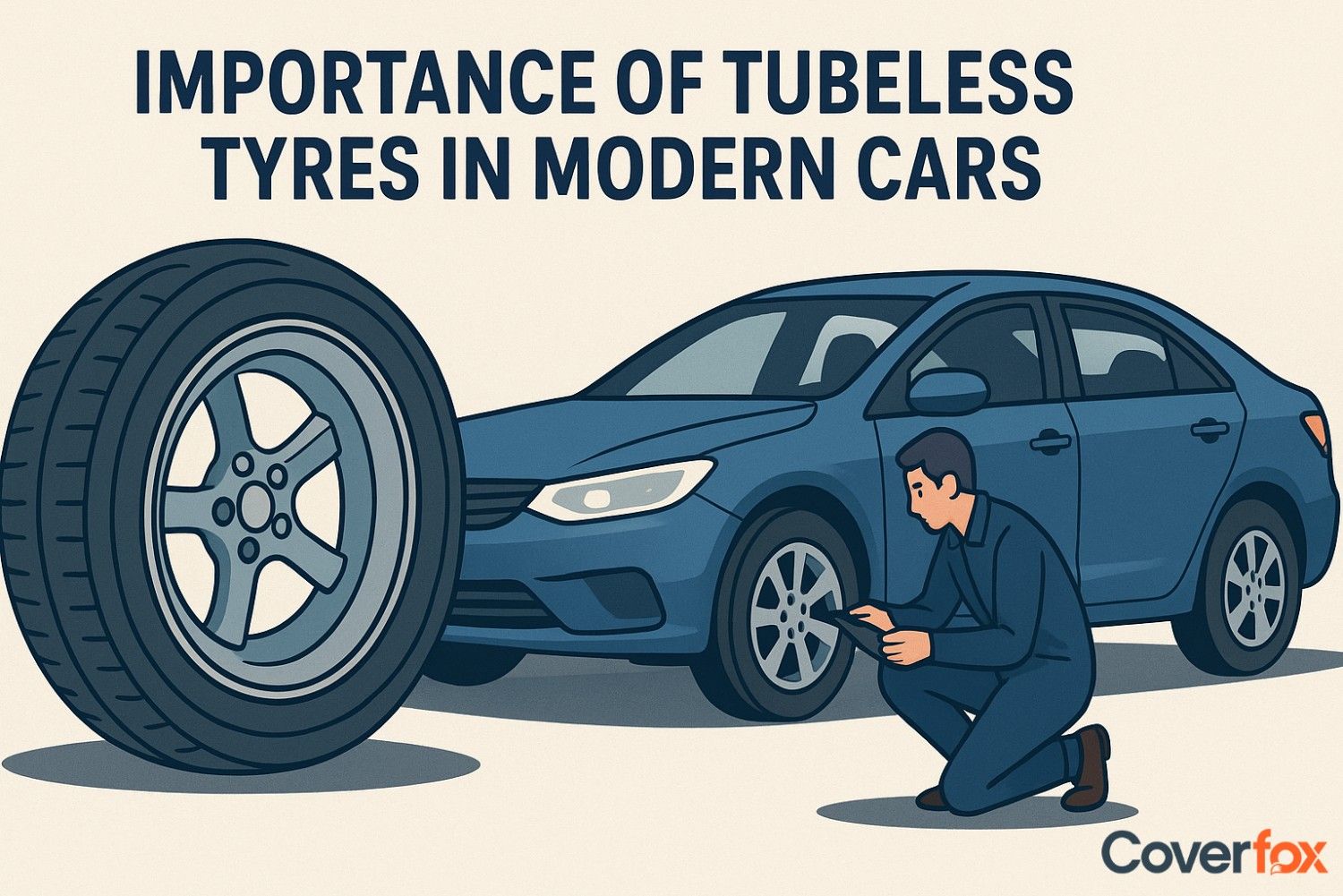A car’s mirrors are vital to ensure safety on the road, as they help you understand what is going on around you, as well as behind you. Similarly, which mirror used in a car also determines the level of visibility on the road. A car convex mirror, also known as a rearview mirror, offers improved safety for the driver as well as others on the road due to its curved surface.

To find out more in-depth about this convex rearview mirror, the guide below covers how it works, its advantages and disadvantages, and how it differs from a flat mirror.
What is a Convex Mirror?
To explain it simply, a mirror that curves outwards, causing the light to reflect outwards, is called a convex mirror. A car convex mirror offers a wider angle of view (3x more) compared to concave or flat-view mirrors, thereby allowing the driver to see a broader view of the area behind as well as beside the car. This becomes useful to minimise the risk of accidents, especially while changing lanes, merging, or reversing.
How Convex Mirrors Function?
Curious to know how exactly a convex mirror in a car works? Then here’s what you need to know:
- Convex mirrors reflect light from an outward-curved surface.
- The curved shape causes light rays to diverge after reflection.
- This divergence creates a smaller image that covers a wider field of view.
- The mirror allows drivers to see vehicles or obstacles that may be hidden in blind spots.
- Since the reflected image appears smaller, drivers should be cautious when judging actual distances.
Benefits and Limitations of Using Convex Rear-View Mirrors
To find out the various advantages and limitations of using convex rear-view mirrors in cars, check out the table given below:
| Advantages of Convex Rear View Mirrors | Disadvantages of Convex Rear View Mirrors |
|---|---|
| Reduces blind spots (areas around the car that are difficult to see) with a wider view. | These mirrors make it Hard to judge the speed of vehicles behind. |
| Offers a broader angle for better visibility, which is useful for changing lanes, backing up, merging onto a highway, etc. | The reflections offered by these mirrors may appear slightly distorted. |
| Offers better safety as it provides a comprehensive view of the surroundings. | These mirrors end up making distant objects look smaller or farther. |
Correct Use of Convex Mirrors in Vehicles
To ensure you use the convex rear-view mirror in your car in the right way, follow the tips given below:
- Before driving, position the mirror correctly to give a wider and clearer view of the surroundings, thereby enhancing the driving experience.
- To get the best viewing angle, make sure to adjust the mirror based on your height and seating position.
- Keep the mirror clean at all times to prevent any obstruction, thereby enhancing both safety and visibility.
- You should use a combination of convex and flat mirrors, as convex mirrors can offer wider visibility, but flat mirrors help determine the speed and distance of vehicles behind you.
Convex vs Flat Mirrors in Cars: A Comparison
To understand the main difference between a convex mirror in a car as compared to flat or concave mirrors, here’s a side-by-side comparison of both:
| Basis for Comparison | Convex Mirror | Flat Mirror |
|---|---|---|
| General View | Provides a greater angular vision, allowing drivers to see more of the surroundings. | Offers a straight line of vision, showing objects as they are. |
| Highway Travel | Reflects vehicles that are adjacent to your own, covering multiple lanes. | Can view only one traffic lane at a time, limiting visibility. |
| Field of View | A broad field of view that helps reduce blind spots. | A limited field of view increases the chances of blind spots. |
| Image Reflection | It may slightly distort the image due to its curved design. | Reflects objects accurately without distortion. |
Wrapping Up
In this way, to understand why we prefer a convex mirror in vehicles, the simple reason is that they play a major role in offering a wider angle of visibility. By reducing blind spots and expanding their field of vision, a convex rear-view mirror helps in reducing the risk of accidents and improving safety for drivers.
While it becomes crucial to invest in these mirrors to improve situational awareness, it is also important to invest in a car insurance policy for added financial coverage, especially in case of sudden unforeseen circumstances on the road.
More Articles:
What is a Car ORVM? How Does it Work?
Blind Spot Mirrors: A Simple Solution to Road Blind Spots & Accidents
Reverse Camera in Car: Features, Types & Safety Benefits
Frequently Asked Questions
Can a flat car mirror be replaced with a convex one?
Yes, it can. However, it is not recommended to replace them, as a flat mirror provides a precise and accurate depiction of what's directly behind while gauging the speed and distance of the vehicle behind as well.
Are convex car mirrors allowed under Indian law?
Yes, it is legal to use convex mirrors in India. However, they should meet certain modifications and vehicle criteria, which should be checked in advance.
Why is car insurance essential?
A car insurance policy is a mandatory legal requirement in India. Based on the type of policy you choose, it helps provide financial coverage for accidental damages, third-party liabilities, theft, and even natural or manmade disasters.
Can convex mirrors be fitted on both sides of a car?
Yes, they can. However, it is recommended to use convex mirrors on the passenger’s rear-view side, as they could otherwise distort images.
Do convex mirrors make objects look nearer or farther?
The inscription beneath a convex rear view mirror reads as “objects in the mirror are closer than they appear,” which means it makes objects appear smaller and farther than they actually are.
Which is better for rear-view mirrors, concave or convex?
Convex mirrors are the better choice for rear-view mirrors, as they provide a wider field of view, thereby expanding the driver’s line of vision and reducing the risk of accidents.
Which mirror type is standard for rear-view use?
In general, flat mirrors are the commonly used mirror type for interior use, while convex mirrors are used as exterior side-view mirrors.
Why are convex mirrors preferred in vehicles?
Convex mirrors are useful, as they offer a wide-angle view, which helps reduce blind spots and increase visibility of surrounding traffic, which further helps drivers in tight spaces or when changing lanes.





